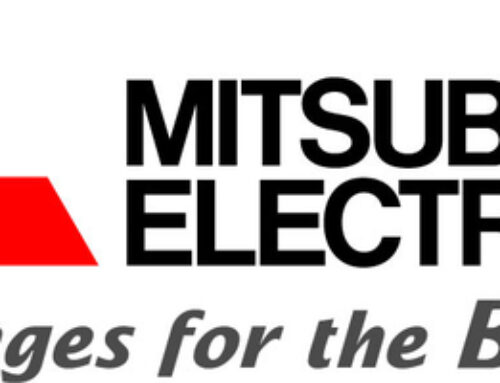This article is from The Spark. MIT Technology Review's weekly climate newsletter. To receive it in your inbox every Wednesday, Sign up here.
Hydropower is a staple of clean energy, with modern versions having been around for more than a century and one of the world's largest sources of renewable electricity.
However, last year there was a significant shortage of hydroelectric power generation due to weather conditions, resulting in a record decrease in power generation.. In fact, the decline was significant enough to have a measurable impact on global emissions. Total energy-related emissions will increase by about 1.1% in 2023, with a lack of hydropower accounting for 40% of that increase, according to a new report from the International Energy Agency.
Don't be satisfied with only half the story.
Access the latest technology news without a paywall.
Subscribe now
Already a subscriber? Sign in
Between year-to-year weather fluctuations and climate change, it can be a challenging time for hydropower. Here's what you can expect from this power source and what it means for your climate goals.
depletion
Hydroelectric power plants use flowing water to generate electricity. Currently, the majority of plants use dams to hold back water and create reservoirs. Operators can flow water to the power plant as needed, creating an energy source that can be turned on and off on demand.
This transferability is a godsend for the power grid, especially since some renewable energies such as wind and solar are not so easy to control. (If anyone finds a way to get me more sunlight, please let me know. I could use more sunlight.)
However, although most hydropower plants have some capacity to supply electricity, they are still dependent on the weather for power., because it is rain and snow that generally fill up reservoirs. That has been a problem in recent years, when many regions around the world have faced major droughts.
In fact, the world added about 20 gigawatts of hydropower capacity in 2023, but weather conditions led to an overall decline in hydropower production.
The shortage was particularly acute in China, where power generation fell by 4.9%. North America also faced drought, which contributed to problems with hydropower, in part due to El Niño causing warmer and drier conditions. Europe was one of the few regions where the situation improved in 2023. The main reason for this is that 2022 was an even worse year for drought on the European continent.
When hydropower became scarce, fossil fuels like coal and natural gas stepped in to fill the gap, contributing to an increase in global emissions. In total, changes in hydropower production had a larger impact on global emissions from 2022 to 2023 than post-pandemic aviation growth.
Chorochoro
Some of the weather changes that caused last year's drop in hydropower production may be due to expected annual fluctuations. But as the climate changes, the question is: Is hydropower in trouble?
The effects of climate change on rainfall patterns are complex and not completely clear. However, there are several important mechanisms by which hydropower generation could be affected, as outlined in one of the 2022 review papers.
- Rising temperatures mean more droughtsWarmer air sucks in more moisture, which causes rivers, soil, and plants to dry out faster.
- Winters are generally warmer with less snow and icein places such as the western United States, reservoirs often fill up in early spring.
- Variation in precipitation is likely to increasethere will be periods of more extreme rainfall, which can cause flooding (meaning water is not properly stored in reservoirs for later use in power plants).
What all this means for power generation depends on the region of the world in question. According to a 2021 global study, around half of countries with hydropower generation capacity are expected to see a 20% reduction in power generation once every 10 years. Another report focused on China found that under more extreme emissions scenarios, nearly a quarter of the country's power plants could consistently reduce their output by that level. did.
Even in a dry year, hydropower is unlikely to slow down even slightly.. However, future power grids will need to be prepared for changing weather conditions. Having a wide range of power sources and linking them to transmission infrastructure across a wide geographic area helps keep the grid robust and prepared for a changing climate.
Related books
Droughts across the western United States have disrupted hydroelectric power generation for years. Let's take a look at how changing weather could affect California's climate goals.
Adaptation can help people avoid the worst effects of climate change, but there are limits to how much adaptation can actually help, as I discovered while traveling to El Paso, Texas, famously known as the “Droughtproof City.” .
Drought poses new challenges for pastoralists who have to deal with a number of threats to their animals and way of life. Access to data can be key to navigating a changing world.

Stephanie Arnett/Mittle | Envato
different thing
Amid ongoing tensions between the United States and China, Chinese EVs have taken center stage. These vehicles could help combat climate change, but the Biden administration is cautious about bringing them to market. He has two main motivations. security and economy. For more information, please see his colleague Zeyi Yang's latest newsletter.
maintain according to climate
A new satellite launched this week will monitor methane emissions. Tracking leaks of powerful greenhouse gases could be key to combating climate change. (New York Times)
→ This is not our first attempt to track greenhouse gases from space, but here's how MethaneSAT differs from other methane detection satellites. (heat map)
Smarter charging for EVs could be essential to future power grids, and California is working on a new program to test it. (Canary Media)
The magnets that power wind turbines almost always end up in landfills. A new program aims to change this by supporting new recycling methods. (Grist)
→ A company wants to do without the rare earth metals used in today's powerful magnets. (MIT Technology Review)
Data centers burn water to keep machines cool. As more facilities emerge to support AI tools such as ChatGPT, water supply may become scarce in some locations. (Atlantic)
No U.S. state is more enthusiastic about heat pumps than Maine.. While it may seem an unlikely match since appliances can lose some of their efficiency in the cold, this state is a technology success story. (New York Times)
New rules from the U.S. Securities and Exchange Commission will require companies to report their emissions and projected climate risks. The final version was watered down from an earlier proposal that would have included a more diverse range of emissions. (Related news organizations)





